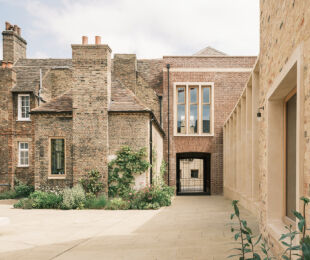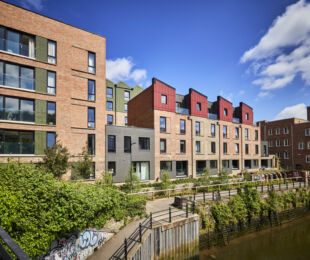
The celebrated Danish artist Per Kirkeby (1938-2018) built more brick structures in his lifetime than many architects. While paintings were his main focus, Kirkeby embraced sculpture, film, poetry, art criticism, travel writing, ballet sets and theatrical costumes and film – he was a friend and collaborator of the maverick filmmaker Lars von Trier – as well as architecture. His brick works, which he casually described as “buildings without purpose”, always did have a purpose of course, but not necessarily a prescribed function. Often elemental in form and, reflective of his lifelong passion for geology, they serve as reminders that buildings not only enclose space but just as importantly, make the space around them. Some were sited in cities, and others in the countryside, but all encouraged the visitor to engage with the physical presence of the work in a way that can’t be achieved with two-dimensional artworks.
A new book, ‘Per Kirkeby – Architecture’, written by Thomas Bo Jensen, professor at Aaarhus School of Architecture, and beautifully produced in generous format by designer Michael Jensen and publisher Torsten Blondal, provides a comprehensive account of Kirkeby’s dozen or so built works and many more unbuilt, almost all assembled from the humble brick. The artist’s foray into architecture began in the 1970s, when he married Danish red-brick traditions, drawing on his childhood in Copenhagen, with archetypal forms – the cave, the labyrinth and the primitive hut, according to Bo Jensen.
Kirkeby first employed bricks for sculptures, some intended for gallery display, and others in the external public realm, where they became “spatial ornaments” that could be entered, developing into “simple repetitive structures of great monumental force”, according to Bo Jensen, often deployed so as to bring some order to disorderly or fragmented urban situations.
Kirkeby’s fascination with brick stems from its essential form allied to its long history. “No matter how we toss and turn brick”, he said, “there is no one on this earth, whether from Bali or Trondheim, who can escape the fact that brick has something historic to it. Even the purest brick also embodies an aura of feelings, stories, and associations.” Contrasting with the process of painting, with its few limitations, he saw bricks as coming with particular requirements, which in turn brought artistic freedoms. Latterly Kirkeby was commissioned to design functioning buildings to a brief and, working in collaboration with architects, built a series of projects that nonetheless retain the elemental power of his earlier sculptural pieces.
Bo Jensen’s book will no doubt be pored over by Kirkeby’s band of loyal followers, but it should also prove fascinating to all those involved in brick design and construction who are seeking to make the most of this simple, humble yet archetypal material that is too often taken for granted.
Author: Thomas Bo Jensen
Publisher: Edition Bløndal
Details: 312pp, 60 euros






